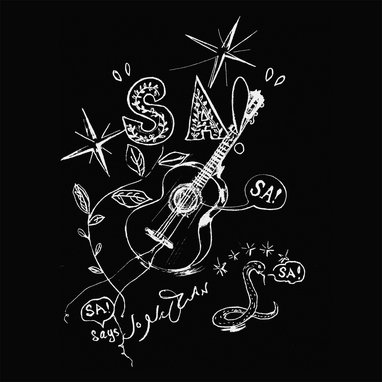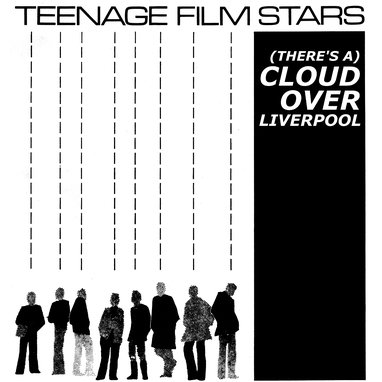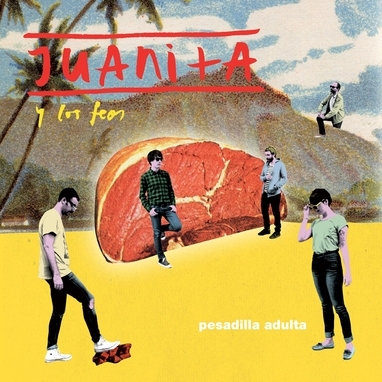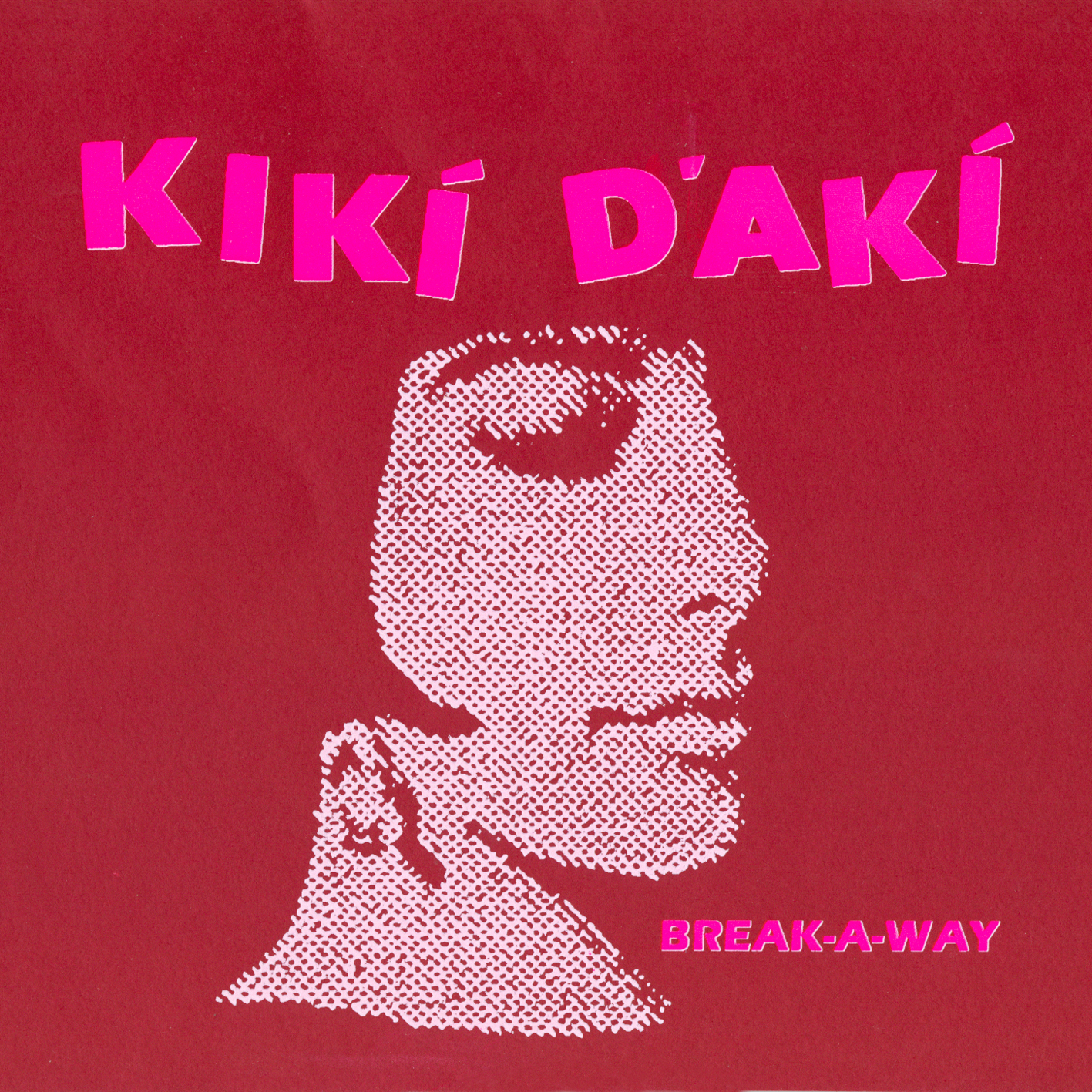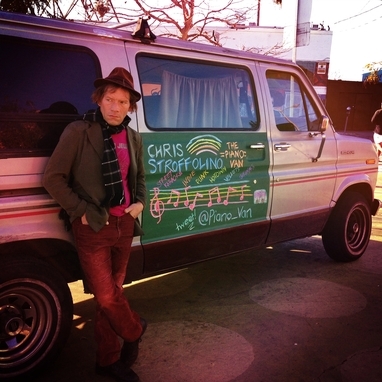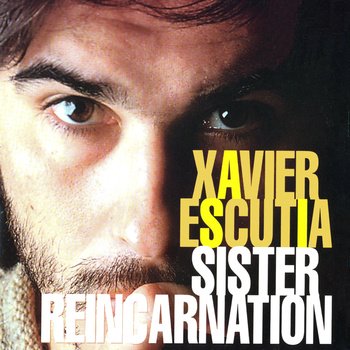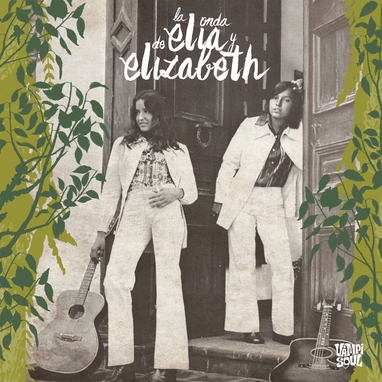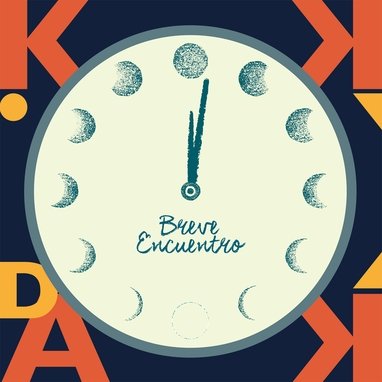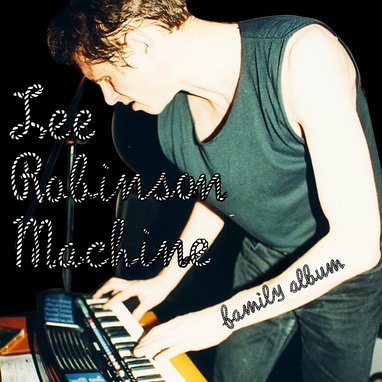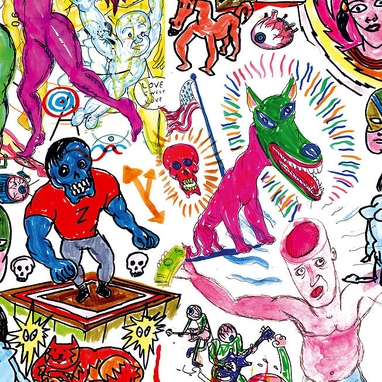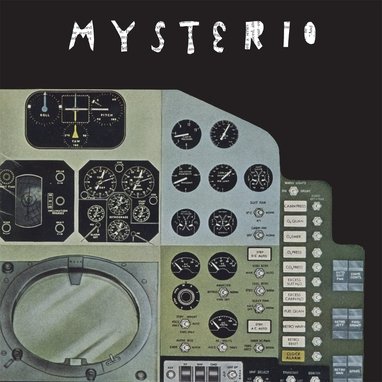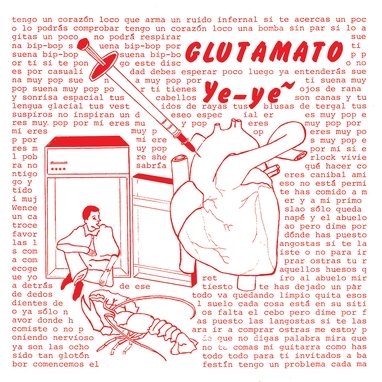Jonathan Richman
SA
20,00€
Munster
Jonathan Richman
SA
SA is the new brilliant chapter in Jonathan Richman’s life in music. This raga-inspired album contains all Jonathan is renowned for: wonderfully engaging songs full of warmth, love, honesty, poetry and his one-of-a-kind artistry. Co-produced by Jonathan Richman, Jerry Harrison (The Modern Lovers, Talking Heads) and Nicole Montalbano.
The tambura player on this record, Nicole Montalbano, has an uncle who was giving away many of his old books. One was Christopher Isherwood’s Ramakrishna and His Disciples. In it is a photo captioned Ramakrishna at Keshab’s house. He is standing among six or seven other men, all of them dressed in white. He is making a gesture of some kind. He has a soft smile on his face. He’s being physically supported by his nephew. I thought I’d already read enough about Indian mystics, but that soft smile intrigued me. So I read the book and now I’m a Ramakrishna fan reading about him whenever a new story presents itself. Ramakrishna (1836-1886) was one of India’s most celebrated and loved mystics of the 19th century. People expecting a severe, remote person, as trained renunciants can be, were surprised, even disappointed to see this normal looking, friendly fellow without much aura of authority or dark foreboding. He had a beard, not because he was an ascetic, but because his skin was too sensitive for the razor. He also had a delicate stomach. So Ramakrishna was very human. He would complain. He would lament. He’d get excited. He’d scold. Some novices seemed to get special treatment. He’d get overtaken by passions to learn from one sage, then maybe from another. He would wake up and sing and dance traditional Hindu chants as he felt the urge. He didn’t know one raga from another and didn’t care. He was there to sing to the Divine. This was no time to get technical! And he was soft. He would weep when someone would sing the old chants with feeling. He’d then get so moved that he’d swoon into what looked like a trance. But it was no trance in the sense of a stupor. He was alert, but could not move his body. His breathing would seem to stop and his chest would become flushed from the blood rushing to it. This might happen two or three times in the same day. People got sort of used to it. The monks that surrounded him were learning from him. Just the way he lived his life. But, as one who had experienced subtle inner states to which the meditator aspires, his counsel on this subject was not to be ignored. He was, after all, a thoroughly trained ascetic and yogi. He would lecture and tell stories. Also, he’d ask the monks to listen for the silent SA tone; the vibration that underlies all material things, according to yogic tradition. So… SA and this record… One night when I put my arm around the waist of my certain someone… I felt the vibe underneath the usual mental one. This vibe was so soothing and so all-encompassing that I made up the song SA right there. Shortly after this song came to me, four of us went into a studio in Chico, California, sat down on a rug on the floor and recorded it. I soon started making up more verses after this so we have two versions on this record; the Chico one starts it, the other one ends it. In the recording that followed the Chico SA sessions, one of the studios was Coyote Hearing in Oakland. There was a Mellotron there – a big white electronic thing like the Beatles used on Strawberry Fields Forever. Well, I thought Jerry Harrison, my old band mate, might sound good on it so he came down. And later he brought a harmonium to the next sessions, both keyboards sounding good with Nicole’s tambura, and the record changed a lot from how it had been into something else: me and Nicole sitting next to each other with the sound of the guitar and the tambura making this whining twang and Jerry across the room with all these low mid-range tones and then on the left Tommy Larkins being the other force. Or, at other times, he was next to Jerry with percussionist Pat Spurgeon. So, since for the past several years I’ve been using the tambura to learn more about pitch (It’s about time! you say?) and since three of the tambura’s four strings are tuned to SA, SA has been in the air. And SA it is. Jonathan Richman
Productos relacionados
20,00€
SA is the new brilliant chapter in Jonathan Richman’s life in music. This raga-inspired album contains all Jonathan is renowned for: wonderfully engaging songs full of warmth, love, honesty, poetry and his one-of-a-kind artistry. Co-produced by Jonathan Richman, Jerry Harrison (The Modern Lovers, Talking Heads) and Nicole Montalbano.
The tambura player on this record, Nicole Montalbano, has an uncle who was giving away many of his old books. One was Christopher Isherwood’s Ramakrishna and His Disciples. In it is a photo captioned Ramakrishna at Keshab’s house. He is standing among six or seven other men, all of them dressed in white. He is making a gesture of some kind. He has a soft smile on his face. He’s being physically supported by his nephew. I thought I’d already read enough about Indian mystics, but that soft smile intrigued me. So I read the book and now I’m a Ramakrishna fan reading about him whenever a new story presents itself. Ramakrishna (1836-1886) was one of India’s most celebrated and loved mystics of the 19th century. People expecting a severe, remote person, as trained renunciants can be, were surprised, even disappointed to see this normal looking, friendly fellow without much aura of authority or dark foreboding. He had a beard, not because he was an ascetic, but because his skin was too sensitive for the razor. He also had a delicate stomach. So Ramakrishna was very human. He would complain. He would lament. He’d get excited. He’d scold. Some novices seemed to get special treatment. He’d get overtaken by passions to learn from one sage, then maybe from another. He would wake up and sing and dance traditional Hindu chants as he felt the urge. He didn’t know one raga from another and didn’t care. He was there to sing to the Divine. This was no time to get technical! And he was soft. He would weep when someone would sing the old chants with feeling. He’d then get so moved that he’d swoon into what looked like a trance. But it was no trance in the sense of a stupor. He was alert, but could not move his body. His breathing would seem to stop and his chest would become flushed from the blood rushing to it. This might happen two or three times in the same day. People got sort of used to it. The monks that surrounded him were learning from him. Just the way he lived his life. But, as one who had experienced subtle inner states to which the meditator aspires, his counsel on this subject was not to be ignored. He was, after all, a thoroughly trained ascetic and yogi. He would lecture and tell stories. Also, he’d ask the monks to listen for the silent SA tone; the vibration that underlies all material things, according to yogic tradition. So… SA and this record… One night when I put my arm around the waist of my certain someone… I felt the vibe underneath the usual mental one. This vibe was so soothing and so all-encompassing that I made up the song SA right there. Shortly after this song came to me, four of us went into a studio in Chico, California, sat down on a rug on the floor and recorded it. I soon started making up more verses after this so we have two versions on this record; the Chico one starts it, the other one ends it. In the recording that followed the Chico SA sessions, one of the studios was Coyote Hearing in Oakland. There was a Mellotron there – a big white electronic thing like the Beatles used on Strawberry Fields Forever. Well, I thought Jerry Harrison, my old band mate, might sound good on it so he came down. And later he brought a harmonium to the next sessions, both keyboards sounding good with Nicole’s tambura, and the record changed a lot from how it had been into something else: me and Nicole sitting next to each other with the sound of the guitar and the tambura making this whining twang and Jerry across the room with all these low mid-range tones and then on the left Tommy Larkins being the other force. Or, at other times, he was next to Jerry with percussionist Pat Spurgeon. So, since for the past several years I’ve been using the tambura to learn more about pitch (It’s about time! you say?) and since three of the tambura’s four strings are tuned to SA, SA has been in the air. And SA it is. Jonathan Richman
Productos relacionados
SA
SA is the new brilliant chapter in Jonathan Richman’s life in music. This raga-inspired album contains all Jonathan is renowned for: wonderfully engaging songs full of warmth, love, honesty, poetry and his one-of-a-kind artistry. Co-produced by Jonathan Richman, Jerry Harrison (The Modern Lovers, Talking Heads) and Nicole Montalbano.
The tambura player on this record, Nicole Montalbano, has an uncle who was giving away many of his old books. One was Christopher Isherwood’s Ramakrishna and His Disciples. In it is a photo captioned Ramakrishna at Keshab’s house. He is standing among six or seven other men, all of them dressed in white. He is making a gesture of some kind. He has a soft smile on his face. He’s being physically supported by his nephew. I thought I’d already read enough about Indian mystics, but that soft smile intrigued me. So I read the book and now I’m a Ramakrishna fan reading about him whenever a new story presents itself. Ramakrishna (1836-1886) was one of India’s most celebrated and loved mystics of the 19th century. People expecting a severe, remote person, as trained renunciants can be, were surprised, even disappointed to see this normal looking, friendly fellow without much aura of authority or dark foreboding. He had a beard, not because he was an ascetic, but because his skin was too sensitive for the razor. He also had a delicate stomach. So Ramakrishna was very human. He would complain. He would lament. He’d get excited. He’d scold. Some novices seemed to get special treatment. He’d get overtaken by passions to learn from one sage, then maybe from another. He would wake up and sing and dance traditional Hindu chants as he felt the urge. He didn’t know one raga from another and didn’t care. He was there to sing to the Divine. This was no time to get technical! And he was soft. He would weep when someone would sing the old chants with feeling. He’d then get so moved that he’d swoon into what looked like a trance. But it was no trance in the sense of a stupor. He was alert, but could not move his body. His breathing would seem to stop and his chest would become flushed from the blood rushing to it. This might happen two or three times in the same day. People got sort of used to it. The monks that surrounded him were learning from him. Just the way he lived his life. But, as one who had experienced subtle inner states to which the meditator aspires, his counsel on this subject was not to be ignored. He was, after all, a thoroughly trained ascetic and yogi. He would lecture and tell stories. Also, he’d ask the monks to listen for the silent SA tone; the vibration that underlies all material things, according to yogic tradition. So… SA and this record… One night when I put my arm around the waist of my certain someone… I felt the vibe underneath the usual mental one. This vibe was so soothing and so all-encompassing that I made up the song SA right there. Shortly after this song came to me, four of us went into a studio in Chico, California, sat down on a rug on the floor and recorded it. I soon started making up more verses after this so we have two versions on this record; the Chico one starts it, the other one ends it. In the recording that followed the Chico SA sessions, one of the studios was Coyote Hearing in Oakland. There was a Mellotron there – a big white electronic thing like the Beatles used on Strawberry Fields Forever. Well, I thought Jerry Harrison, my old band mate, might sound good on it so he came down. And later he brought a harmonium to the next sessions, both keyboards sounding good with Nicole’s tambura, and the record changed a lot from how it had been into something else: me and Nicole sitting next to each other with the sound of the guitar and the tambura making this whining twang and Jerry across the room with all these low mid-range tones and then on the left Tommy Larkins being the other force. Or, at other times, he was next to Jerry with percussionist Pat Spurgeon. So, since for the past several years I’ve been using the tambura to learn more about pitch (It’s about time! you say?) and since three of the tambura’s four strings are tuned to SA, SA has been in the air. And SA it is. Jonathan Richman
SA is the new brilliant chapter in Jonathan Richman’s life in music. This raga-inspired album contains all Jonathan is renowned for: wonderfully engaging songs full of warmth, love, honesty, poetry and his one-of-a-kind artistry. Co-produced by Jonathan Richman, Jerry Harrison (The Modern Lovers, Talking Heads) and Nicole Montalbano.
The tambura player on this record, Nicole Montalbano, has an uncle who was giving away many of his old books. One was Christopher Isherwood’s Ramakrishna and His Disciples. In it is a photo captioned Ramakrishna at Keshab’s house. He is standing among six or seven other men, all of them dressed in white. He is making a gesture of some kind. He has a soft smile on his face. He’s being physically supported by his nephew. I thought I’d already read enough about Indian mystics, but that soft smile intrigued me. So I read the book and now I’m a Ramakrishna fan reading about him whenever a new story presents itself. Ramakrishna (1836-1886) was one of India’s most celebrated and loved mystics of the 19th century. People expecting a severe, remote person, as trained renunciants can be, were surprised, even disappointed to see this normal looking, friendly fellow without much aura of authority or dark foreboding. He had a beard, not because he was an ascetic, but because his skin was too sensitive for the razor. He also had a delicate stomach. So Ramakrishna was very human. He would complain. He would lament. He’d get excited. He’d scold. Some novices seemed to get special treatment. He’d get overtaken by passions to learn from one sage, then maybe from another. He would wake up and sing and dance traditional Hindu chants as he felt the urge. He didn’t know one raga from another and didn’t care. He was there to sing to the Divine. This was no time to get technical! And he was soft. He would weep when someone would sing the old chants with feeling. He’d then get so moved that he’d swoon into what looked like a trance. But it was no trance in the sense of a stupor. He was alert, but could not move his body. His breathing would seem to stop and his chest would become flushed from the blood rushing to it. This might happen two or three times in the same day. People got sort of used to it. The monks that surrounded him were learning from him. Just the way he lived his life. But, as one who had experienced subtle inner states to which the meditator aspires, his counsel on this subject was not to be ignored. He was, after all, a thoroughly trained ascetic and yogi. He would lecture and tell stories. Also, he’d ask the monks to listen for the silent SA tone; the vibration that underlies all material things, according to yogic tradition. So… SA and this record… One night when I put my arm around the waist of my certain someone… I felt the vibe underneath the usual mental one. This vibe was so soothing and so all-encompassing that I made up the song SA right there. Shortly after this song came to me, four of us went into a studio in Chico, California, sat down on a rug on the floor and recorded it. I soon started making up more verses after this so we have two versions on this record; the Chico one starts it, the other one ends it. In the recording that followed the Chico SA sessions, one of the studios was Coyote Hearing in Oakland. There was a Mellotron there – a big white electronic thing like the Beatles used on Strawberry Fields Forever. Well, I thought Jerry Harrison, my old band mate, might sound good on it so he came down. And later he brought a harmonium to the next sessions, both keyboards sounding good with Nicole’s tambura, and the record changed a lot from how it had been into something else: me and Nicole sitting next to each other with the sound of the guitar and the tambura making this whining twang and Jerry across the room with all these low mid-range tones and then on the left Tommy Larkins being the other force. Or, at other times, he was next to Jerry with percussionist Pat Spurgeon. So, since for the past several years I’ve been using the tambura to learn more about pitch (It’s about time! you say?) and since three of the tambura’s four strings are tuned to SA, SA has been in the air. And SA it is. Jonathan Richman

